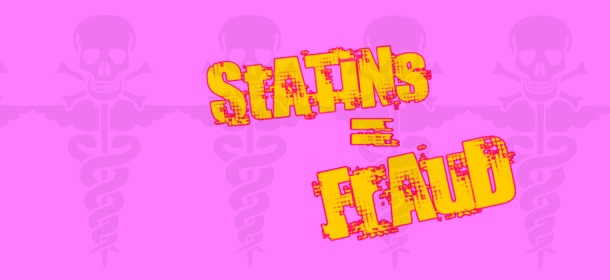Environment
Heart Attack Is a Disease of Agribusiness, Not Long Lives
Claims that primitive societies’ lack of heart attacks can be explained by shorter lifespans are based on nothing but wishful thinking. It seems logical, but there’s nothing behind the words.
(Reprising an oldie)
by Heidi Stevenson
It sounds good, so the claim that primitive people don’t live long enough to get heart attacks is routinely trotted out by modern medicine apologists. The problem is that it isn’t true—and no documentation has ever shown it to be true.
There is, in fact, ample documentation demonstrating the opposite, that people who are not subjected to modern Agribusiness diets almost never fall victim to heart attacks, no matter what their lifespans. Much of the documentation also applies to cancer, the other scourge of modern societies.
Studies of the Kuna
The 1997 Study, Focus on Salt
The Kuna people live on islands in the Panamanian Carribean Sea. In one study, which we’ll refer to as 1997 study for the year it was published, focused on salt, but didn’t carefully analyze the food itself. It found that those who live a traditional lifestyle and eat a largely traditional diet, with or without salt, hypertension is a rarity and blood pressure does not rise with age.(1)
The 1997 study’s primary focus is on salt intake. If they had any bias, the authors of the study would have leaned towards a typical modern medicine viewpoint. Their financing came from the Baxter Foundation, which was created by the pharmaceutical corporation, and the National Institutes of Health, which has supported the usual balderdash spouted by modern medicine regarding the causes of heart disease.
Of the 316 Kuna participants, 184 were isolated and lived traditionally, 84 lived and worked in urban Panama City, and 90 worked in the outskirts of Panama City and maintained a lifestyle that was a cross between the urban and isolated Kuna; the latter were referred to as suburban. Ages ranged from 18 to 82.
The isolated Kuna showed no hypertension and no age-related rise in blood pressure. The highest blood pressure readings in two subjects were 140 mm Hg systolic and less than 85 mm Hg diastolic. The body mass index (BMI) average of 22.5 (+/-0.5) kg/m2 was unchanged by age.
The urban Kuna living and working in Panama City showed significant blood pressure increases with age. Overall, 10.7% suffered from hypertension, and 45.1% of those over age 60 suffered from it. The BMI rose with age and was an average of 23.6 (+/-0.5) kg/m2.
The suburban Kuna’s blood pressure also rose significantly, though not as much as the urbanites’. The prevalence of hypertension in those over age 60 was 35.9% and average blood pressure rose with age. Their BMI averaged 22.8 (+/- 0.3), almost the same as the island-isolated group.
The isolated Kuna’s salt intake was analyzed. 50 of the 184 added salt to their food, a modern addition that the rest did not follow. Of the salt users, the added salt contributed 75% to their overall sodium. The range of salt intake was from 0.2 to 6 teaspoons per day. The islanders’ diet, as compared to the American diet, was low in fat and protein, and high in carbohydrates and fiber. It did not, of course, include any food from modern Agribusiness.
In spite of significant salt intake, the islanders suffered virtually no hypertension, while those who adhered to a more modern lifestyle and food intake did suffer from hypertension.
The 2007 Study, Focus on Flavanoids
The 1997 study did not closely analyze the Kuna diet. That was remedied in a study published in 2007. It revealed that the Kuna diet is significantly higher in fat than the typical American’s.
The 2007 study documented that the average meat intake, including fish, is identical to the average American’s: 8.6 ounces per day.
The Kuna routinely consume 40 ounces of a drink made from cacao every day. The study did not calculate its fat content, instead focusing on flavanoids, thereby completely missing the amount of fat consumed. American-based cocoa is made from defatted cacao, but the Kuna do not use that; they use the full-fat local cacao. It contains 44.2% fat by weight. The average Kuna’s daily fat intake is 8 grams more than the average American’s.
The 2007 study reports on the life spans of Panamanians as a whole and Kuna isolated on islands. The results are revealing:
The Kuna live significantly longer than Panamanians who lead more modern lives. Their lives are far more primitive and, as documented by the 2007 study, the Kuna have significantly higher rates of death from infectious diseases, in particular diarrhea, tuberculosis, malaria, influenza, and Aids. However, the rate of death from the diseases of modern life are far lower among the Kuna. These include cardiovascular disease (strokes and heart attacks), cancer, and diabetes.
The 2007 study provides tables listing death rates per 100,000 for Panamanians and Kunas. It’s quite revealing, so is reproduced here.
The 2007 study set out to prove that flavanoids are the significant factor in determining lifespan. While the study is quite revealing, it seems to have gone to some lengths to avoid the question of fat intake among the Kuna, thus compromising the results. Nonetheless, it provides two significant pieces of information. The first should put to an end the presumption that people living primitive lifestyles must live short lives. It’s obvious from this study that it’s not true.
The study also demonstrates that something in modern life are harmful. The Kuna, though they suffer from higher mortality due to infections, including Aids, nonetheless live longer and healthier lives than modern Panamanians. Their rate of diabetes is 12.7% that of Panamanians as a whole. The rate of cardiovascular disease is only 7.1% that of Panamanians. Cancers happen at only 4.0% the rate of Panamanians. On top of their better general health, they live significantly longer, too.
It’s obvious that something in modern life is causing an enormous amount of chronic disease.
Studies of the Masai(3)
Stephan Guyenet reported on several studies of the African Masai and their diet. Boys are inducted into the warrior class at age 14, whereupon they’re called Muran. Over the next 15-20 years, they eat nothing but milk, blood, and cow’s meat, for an average of 3,000 calories a day.
Masai cows are not like American cows. Their milk has double the fat, more protein, and more cholesterol. A full two-thirds of the Muran’s calories come from fat, and about half of those are from saturated fat—possibly the highest percentage in the world. The result is that the Muran suffer virtually no obesity, and their cholesterol levels are low, about half the average American’s.
Muran blood pressure is low and hypertension extremely rare. They have almost no signs of heart disease, as documented by electrocardiograms. Their endurance is exceptionally good.
Two studies were done to investigate atherosclerosis in the Masai. The first study, published in 1971, documented very little evidence of arterial disease. The second, published in 1972, did—but not in the Muran men who eat only blood, milk, and meat. The evidence is quite stark.
The researchers autopsied 50 hearts of males between ages 10 and 65. They did not find a single instance of evidence for myocardial infarction. In males age 40 and younger, they found only minimal evidence of atherosclerotic lesions. After age 40, they found major evidence of such lesions.
The researchers also looked for fatty streaks in arteries. Again, they found very little before age 40, but a sudden spike shortly after age 40. The authors wrote:
We believe…that the Muran escapes some noxious dietary agent for a time. Obviously, this is neither animal fat nor cholesterol. The old and the young Masai do have access to such processed staples as flour, sugar, confections and shortenings through the Indian dukas scattered about Masailand. These foods could carry the hypothetical agent.
Processed flour, sugar, confections, and shortenings (as in trans fats) are major portions of the diet of the Masai who aren’t Muran warriors. As noted before, the change in diet from what modern medicine would call extremely bad to modern Agribusiness-based processed food seems to result in a stark change in arterial health.
Studies of the Kitavan(4)
Dr. Staffan Lindeberg studied the Kitavan’s diet and health extensively. Stephan Guyenet, whose report is referenced here, believes that “This study is one of the most complete and useful characterizations of the diet and health of a non-industrial society I have come across.”
The Kitavan are a pre-industrial people of Papua New Guinea in the South Pacific. They are a combination of hunter-gatherers and farmers. Guyenet describes them as beautiful people with smooth skin and excellent teeth that are typical of healthy people. Their diet is centered on tubers, including yams, sweet potatoes, taro, and cassava, with a healthy smattering of fruit, veggies, coconut, and fish.
There are almost no grains, refined sugar, vegetable oils, or any of the other trappings of an Agribusiness-based diet. About 69% of their calories, an average of 2200 per day, are from carbohydrates. The percentage of saturated fat is high, though total fat is low. The balance of omega-3 fat to omega-6 fat is about 2:1 (2 to 1), whereas the typical American’s is somewhere between 1:20 and 1:50, the result of Agribusiness provided oils and fats.
The Kitavan lifestyle is not the sort that’s defined as particularly healthy. Their activity level is only about that of a “moderately active Swede”. Their need to work is low, as food is abundant. Their good health cannot be attributed to genes, because other closely related groups who are exposed to a modern diet suffer extensively from chronic disease.
Life expectancy at birth is believed to be about 45 years. That, however, includes a high rate of infant mortality. For those who survive infancy, the death rate is not much different from people in modern societies. A person who reaches age 50 can expect another 25 years. A study of all Kitavans over age 3 found 1,816 people, of whom 126 were between ages 60 and 96 years.
There is one modern vice to which the Kitavan people have succombed: more than 75% of them smoke tobacco. In spite of this, the Kitavans are completely unaware of characteristic symptoms of heart attack and stroke. The researcher Lindeberg found no indication of any heart disease or stroke. He did note that those who had become urbanized do suffer from those diseases.
Dementia is also unknown among the Kitavan, except in cases of birth defects. The elderly maintain their intelligence until they die. They suffer from almost no degenerative diseases.
Heart Attacks Are a Disease of Modern Society(5)
Stephan Guyenet presents a marvelous study that documents the connection between modern western societies and heart disease. He references a paper from the American Journal of Cardiology, published in 1964 called “Geographic Pathology of Myocardial Infarction”, authored by Dr. Kyu Taik Lee. He studied autopsy data from hospitals in the US and sorted them by race and geographical heritage. He compared them with data from the countries of heritage.
The specific peoples he studied were Americans of Caucasian, Japanese, and African descent. He compared them with autopsy reports from Japan, Nigeria, and Uganda. He also separated men from women of African descent. His investigation included not only myocardial infarctions that resulted in death, but also evidence of non-fatal heart attacks.
The evidence is dramatic, as shown by the graphs here. Be sure to look at them. They are damning evidence that something other than genes or longevity is causing nearly all of America’s heart disease.
At the time of the study, the modern Agribusiness diet had not yet infiltrated much of Japan or Africa. It is blatantly obvious that genetics have little or nothing to do with the cause of heart disease. The rates of heart attacks for American Japanese and Africans is nearly as high as for Caucasians in America. Yet, heart disease is nearly unknown in the lands they came from.
What’s Really Causing Heart Disease?
As can be seen from the scientific research, genetics cannot possibly be a significant factor in heart disease or other chronic illness. It’s obvious that something inherent in modern western society is the cause.
Stress can fairly easily be eliminated as the most significant factor. If it were, then the Japanese rate of heart disease in 1964 would have been similar to that of America’s. Instead, it was minimal. This is not to suggest that stress has no bearing, but it certainly cannot be the primary issue.
That the Masai men suffer only minimal atherosclerosis until their diet changes, and virtually no heart attacks at any time of life, points the finger directly at food as the primary issue in heart disease.
The specious, but logical-sounding, claims that short lifespan is the reason other cultures, especially primitive ones, don’t suffer from much heart disease or other chronic illness is upended by the evidence. Non-western societies that don’t eat a western Agribusiness diet do not suffer from heart disease, or apparently any other chronic disorder, at any age—and in some cases, at least, live fine, long lives.
The most pervasive element in western civilization is the modern diet based on Agribusiness’s push for profits. An argument can be made for pollution, including that of toxins and treatments produced by modern medicine. There can be little doubt that those are also significant factors, and studies need to be done to determine how significant.
However, the single element of Agribusiness-contrived synthesized gunk masquerading as food appears to be the most significant factor in chronic disease. It forms the basis of our structure and substance. If we absorb good nutrition, then we’re better able to resist the toxic elements in our lives. As long as our diet is based on the processed crap that passes as food today, whether from fast food pseudo-restaurants, or prepared foods from the majority of other restaurants, or 90% of the garbage sold in supermarkets, or even the noxious stuff passed off as food in school lunch programs, we are eating our way to early death preceded by a lifetime of debilitation.
Whole Health Source,
provided much of the information that went into it.
Check it out!
The Raster Group
creativestem
http://www.luisaraujo.com/
Sources:
- (1)Aging, Acculturation, Salt Intake, and Hypertension in the Kuna of Panama
- (2)Does Flavanol Intake Influence Mortality from Nitric Oxide-Dependent Processes? Ischemic Heart Disease, Stroke, Diabetes Mellitus, and Cancer in Panama
- Say Hello to the Kuna
- (3)Masai and Atherosclerosis
- Atherosclerosis in the Masai
- (4)The Kitavans: Wisdom from the Pacific Islands
- (5)Ischemic Heart Attacks: Disease of Civilization
- Ischemic Heart Attacks: Disease of Civilization
Tagged agribusiness, disease modern society, flavanoids health, flavanoids heart attack, health agribusiness, heart attack, heart attack agribusiness, heart attack disease modern society, kuna health, kuna heart disease, kuna lifespan, masai heart attack, masai heart disease















Pingback: Comparison of Heart Attacks Between Americans of Ethnic Heritage and Geographical Origin | Gaia Health
Pingback: Causes of Death Among Panamanians and the Kuna | Gaia Health